Northern Lights CCS: Trailblazing the Path to Europe’s Net Zero Emissions
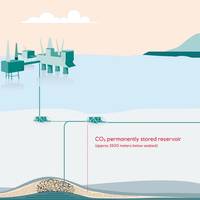
In the global quest for achieving net zero emissions and slowing down global warming, carbon capture and storage (CCUS) technology has emerged as an important solution. Among the notable projects being developed in the field is the Northern Lights offshore carbon capture and storage project in Norway, a country with long experience with offshore CO2 storage.The transition to a sustainable energy future requires innovative solutions that go beyond simply halting fossil fuel projects.
Svanehøj Pumps for Northern Lights CO2 Carriers
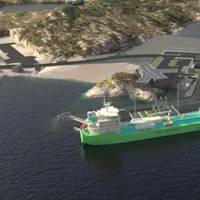
The Danish marine pumps specialist Svanehøj will supply pump systems for two CO2 carriers that will transport liquid CO2 to the Northern Lights storage facilities in Norway.Northern Lights, the JV owned by Equinior, Shell, and TotalEnergies, is developing infrastructure to transport CO2 from industrial emitters in Norway and other European countries by ship to a receiving terminal in western Norway for intermediate storage, before being transported by pipeline for permanent storage in a geological reservoir 2…
Great Ships 2018: BP's British Partner
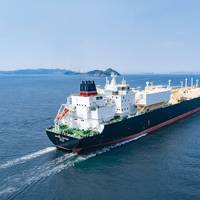
BP Shipping took delivery of British Partner, the first of a half dozen new 173,400 cu. m. capacity liquefied natural gas (LNG) carriers to be delivered through 2018 and 2019 from the DSME shipyard in South Korea. BP Shipping, which launched a fleet rejuvenation program in 2016 that includes 32 new vessels for delivery over a three-year period, said the six new Partnership class ships will increase its ability to transport LNG in emerging new markets, such as Pakistan, Jordan, Egypt and Bangladesh, in addition to established markets, such as India, China, the U.S.
First of Six New LNG Carriers Delivered to BP
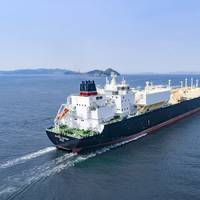
BP Shipping has taken delivery of British Partner, the first of a half dozen new 173,400 cubic meter capacity liquefied natural gas (LNG) carriers to be delivered through 2018 and 2019 from the DSME shipyard in South Korea.BP Shipping, which launched a fleet rejuvenation program in 2016 that includes 32 new vessels for delivery over a three-year period, says the six new Partnership class ships will increase its ability to transport LNG in emerging new markets, such as Pakistan, Jordan, Egypt and Bangladesh, in addition to established markets, such as India, China, the U.S.
First Ethane-powered Ships Classed by Bureau Veritas
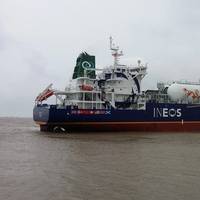
The first ethane-powered ship, JS Ineos Insight, the leading ship in a series of eight 27,500-cubic-meter multi-gas Dragon-class vessels being built at Sinopacific, China, for Denmark’s Evergas, was named on July 14. The new vessels configured for transport of ethane, LPG or LNG, with options for ethane, LNG and conventional diesel power, will be classed by classification society Bureau Veritas. “The ability to burn ethane as well as LNG to power these unique vessels is a major step forward in the use of clean fuels.
Damen Delivers Second Oil Tanker to James Fisher Everard
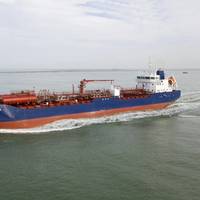
The Damen Double Hull Oil Tanker 8000 Kestrel Fisher was delivered end 2013 to Dutch managers De OpfeartBeheer. In a two-tanker deal, the Kestrel Fisher’s sister vessel King Fisher was delivered in June 2013. Both have been built by Damen Shipyards Bergum. The oil (product) tankers’ names are a reference to James Fisher Everard Ltd., which have taken up their commercial management. The 7,076-deadweight, 8,363-cubic-meter tankers were christened at the DSB-yard in Harlingen where they were outfitted; their hulls were built by Damen Shipyards Galati, Romania.
BV to Class LNG Carrier
Chantiers de l'Atlantique this week. and is due for delivery in 2005. vessel. new rules to allow the yard and owners to break new technological frontiers. commercial manager of BV's marine division. transportation. The ships have two key innovations. cargo gas will be carried in the new GTT CS1 membrane system. such engines. machinery plant. needed to develop the cost-effective CS1 containment system. BV concept approval in 2002. The dual fuel diesel electric propulsion system offers several advantages. space in the hull. conventional turbine installations. are now in short supply. taken off line and maintained on passage. cutting the risk of a power failure. and NO96 membrane systems. and a cost reduction of 15 per cent compared to existing systems.
News: World's Biggest LNG Carrier Due in 2005
A 153,500 cu. m. LNG carrier ordered by Gaz de France from Chantiers de l'Atlantique - reported to be the largest ever LNG carrier - will be classed by Bureau Veritas and is due for delivery in 2005. The order includes an option for a second vessel. The vessels feature a long list of innovations, but two of them are particularly noteworthy. The traditional steam turbine plant will be replaced by a low-pressure dual fuel diesel electric system. BV cooperated with Wärtsilä for the development of the safety concept of the low-pressure dual fuel diesel/gas engine, and has issued new rules for such engines. The dual fuel diesel electric propulsion system is more compact as compared to a typical steam turbine plant installation, with the obvious benefit of providing for more cargo space.
Wärtsilä Dual-Fuel Engines for 153,000 m3 LNG Carrier
Wärtsilä Corporation has been awarded a contract by the French shipbuilder Chantiers de l'Atlantique to supply dual-fuel main engines for a new 153,000m3 LNG carrier. The LNG carrier has been ordered by the French gas distributor Gaz de France for delivery in October 2005. It will be employed in the shipment of liquefied natural gas (LNG) from Norway or Egypt, but is also designed for the alternative of trading on the spot market. The vessel will have gas-electric propulsion, with four dual-fuel engines driving generators to supply electricity for the single propeller plant. The engines will burn boil-off cargo gas with a small quantity of liquid fuel for ignition. They will mainly can run on gas with liquid fuel as back-up, and can be switched over automatically as the need arises.
French Snag LNG Order
In February Gaz de France ordered a 74,000 cu. m. LNG carrier from Chantiers de l'Atlantique, with an option for a second vessel. The French have maintained a strong hold on this high-tech, high-value ship type despite the general migration of gas ship orders to the Far East. In particular, Bureau Veritas helped develop the concepts for the vessels, and developed unique new rules to allow the yard and owners to break new technological frontiers. "BV has consistently been the world leader in LNG carriage, since development of membrane LNG carriers was first begun," says Bruno Dabouis, commercial manager of BV's marine division. "Now we will class these new vessels, which are a quantum leap forward in cost-effective LNG transportation. The ships have two key innovations.






